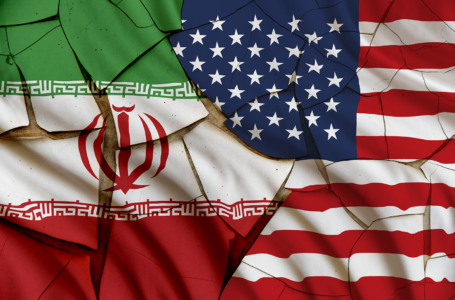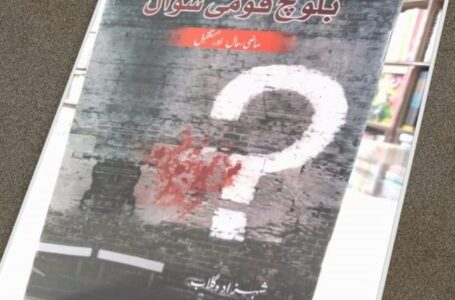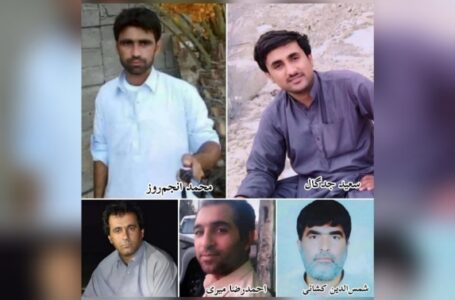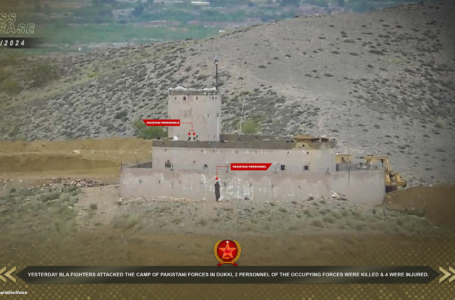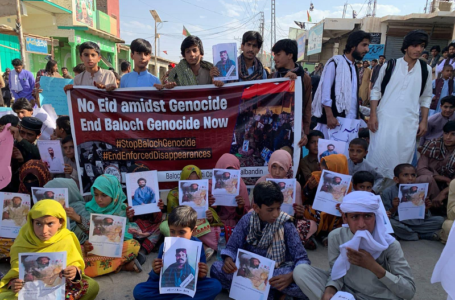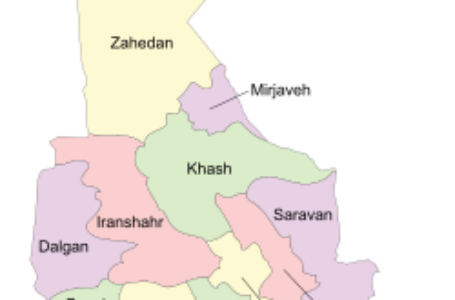Foreign countries should refrain from becoming Pakistan’s partner in Baloch Genocide: FBM
The Effects of Pakistan’s Nuclear Weapons on Balochistan

By: Qaazi Baloch
Every nation or State, in the world, tries to sustain its sovereignty and guarantees the security of its residents. In the name of this security, most of the states either make or import different kinds of weapons by increasing their military capability. History has witnessed several calamitous wars between states in the name of their security and sovereignty. These circumstances compelled them to build their strategic position. Consequently, conventional weapons became famous in the wars.
During both wars, World War first and World War Second, heavy weapons were used. Not only this, the world became shocked when the United States used nuclear weapons for the first time in the history of the world by attacking Hiroshima and Nagasaki, two cities of Japan. The nuclear airstrikes killed millions of people, destroyed a number of areas, and wounded several others. Keeping this in the view, this article discusses the effects of Nuclear Weapons over human societies.
According to an estimation of United Nations Office for Disarmament Affair (UNODA) since the bombing of Hiroshima and Nagasaki in 1945 about 14,500 reportedly remain in the world today and 2000 nuclear tests have been conducted to date. Even though the UN General Assembly has passed several resolutions and several treaties have been signed between parties to eradicate or sweep up the nuclear weapons but they have not been completely successful yet.
In 1946 First UN resolution was passed in General Assembly which established a commission to deal with the problems related to the discovery of atomic weapons and to ensure their use for peaceful purposes. The treaties include Treaty on the Non-Proliferation of Nuclear Weapon (NPT), the Treaty Banning Nuclear Weapon Tests In the Atmosphere, In Outer Space And Under Water, also known as Partial Test Ban Treaty (PTBT), the Comprehension Nuclear Test Ban Treaty CTBT signed in 1996 but not imposed yet, Treaty on the Prohibition of Nuclear Weapons TPNW signed in 2017 but remain to be imposed in upcoming days.
These treaties aim to get rid of both tactical and strategic nuclear weapons. The UNODA report further says that modern nuclear weapons are more dangerous than the weapons used in Japan in 1945. The effects of nuclear weapons are further classified into the following four parts.
1: Instantaneous: The using of Nuclear weapons result in high temperature. According to estimation temperature may reach seven million degrees centigrade where the weapons are used. Over a wide area, the resulting heat flash literally vaporizes all human tissue. A writer articulates “At Hiroshima, within a radius of half a mile, the only remains of most of the people caught in the open were their shadows burnt into stone.”
2: Near-Immediate: The blast kills people whether living inside buildings or outside because of heat effects as building collapse all inflammable materials burst into flames. The immediate death rate will be over 90%. The writer further adds “Various individual fires will combine to produce a firestorm as all the oxygen is consumed. As the heat rises, the air is drawn in from the periphery at or near ground level. This results in lethal, hurricane force winds as well as perpetuating the fire as the fresh oxygen is burnt. Such firestorms have also been produced by intense, large scale conventional bombing in cities such as Hamburg and Tokyo. People in underground shelters who survive the initial heat flash will die as all the oxygen is sucked out of the atmosphere.”
3: Short Term: Survivors will be affected within a matter of days by the radioactive fall-out. The extent of the fall-out will vary according to whether the nuclear bomb detonates in the air (as at Hiroshima) or upon impact on the ground. While the former will entail more blast impact, the latter will throw up much larger quantities of radioactive debris into the atmosphere. The effects of exposure to high levels of radioactive fall-out include hair loss, bleeding from the mouth and gums, internal bleeding and hemorrhagic diarrhoea, gangrenous ulcers, vomiting, fever, delirium and terminal coma. There is no effective treatment and death follows in a matter of days.
4: Long Term: Radiation-induced cancers will affect many, often over twenty years later. Certain cancers such as thyroid cancer in children are particularly associated with exposure to radiation. The children of those exposed to radiation are statistically more likely to be born with abnormalities and suffer from leukaemia. Because of the long period between exposure and the onset of cancer, it is difficult to attribute particular cancer to a particular cause. The correlation is described as epidemiological, rather as the connection between smoking and lung cancer was statistically established before the medical links had been uncovered.
Accurate estimates of long term fatalities at Hiroshima and Nagasaki are not possible given the large scale destruction of records, population movements and general censorship on nuclear effects by the US occupation regime. However, the generally used estimates of casualties are 140,000 in Hiroshima and 75,000 in Nagasaki.
In accordance with the above mentioned written texts, it is hoped that the civilized world and the United Nations collectively enforce the treaties so that the nuclear weapons can be used just for peaceful purposes. Despite the world powers, Pakistan, a promoter of Jihadism and extremism also has nuclear weapons which are a threat to global peace and security.
Pakistan tested its weapons on a populated area of Balochistan named Rashkoh district Chagi on 28 May 1998. There has been no independent investigation of the aftermath of these tests and people in the area of reported numerous effects on the residents. Several diseases have been frequent and infants are born with deformities and abnormalities.
Since that day (28 May 1998) Baloch people have been protesting against such criminal atrocities of Pakistan Army. United Nation and IAE should send independent teams in Balochistan to investigate the effects of Pakistan nuclear weapons on the people of Balochistan and make sure the area is safe for the people.



